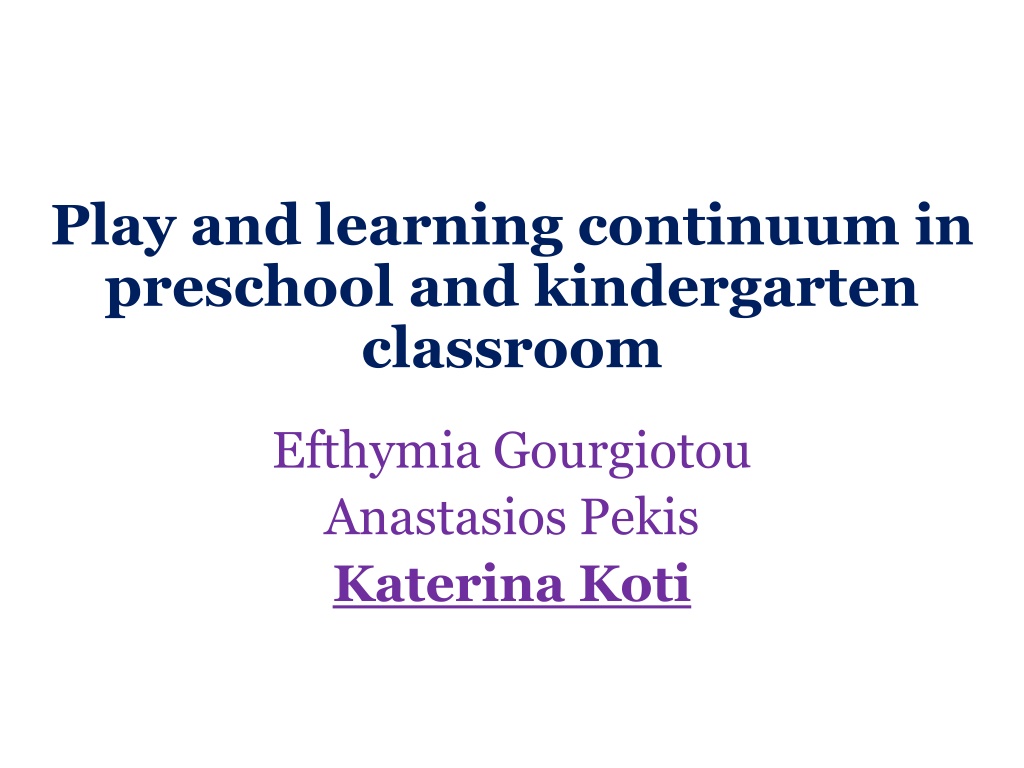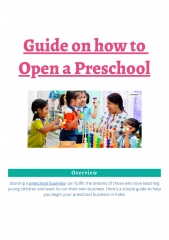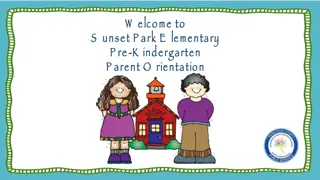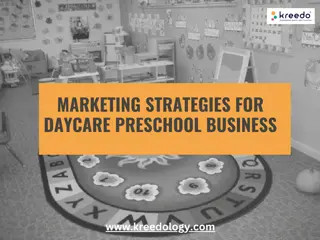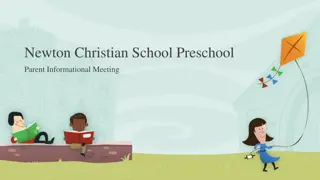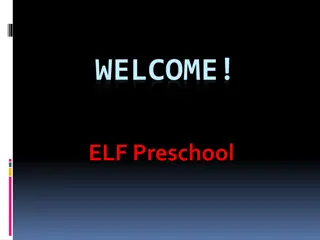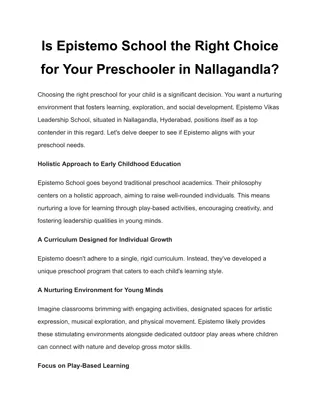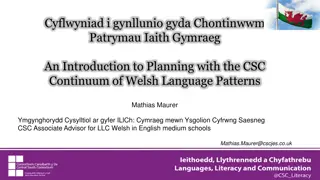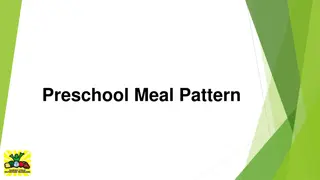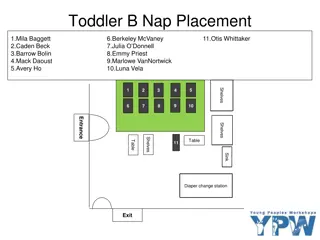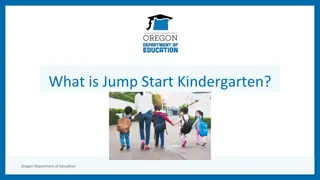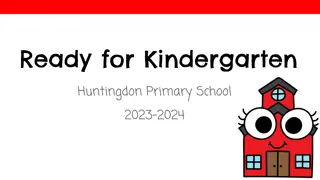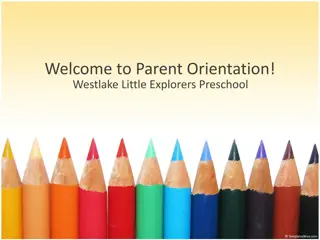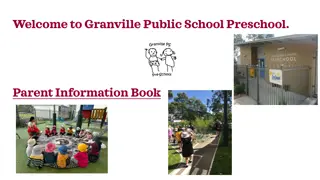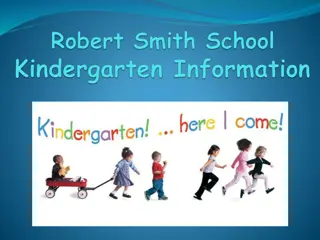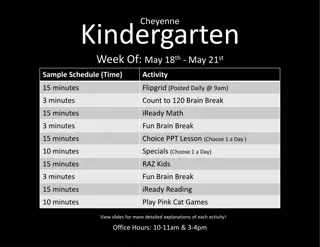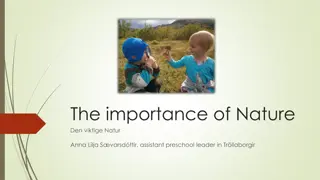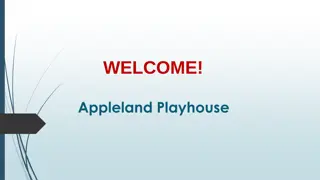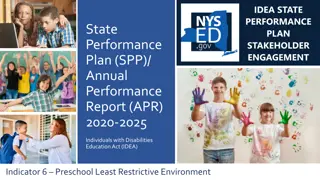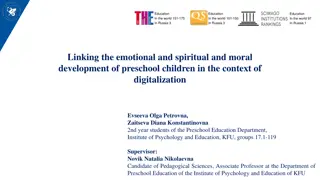Understanding the Play and Learning Continuum in Preschool and Kindergarten
Exploring the relationship between play and learning in early childhood education, this article delves into the historical traditions and current challenges faced in providing quality experiences for children aged 4-6 years. It emphasizes the importance of continuity in care and education to support children's development across different settings. The significance of play in promoting self-regulation, language, cognition, and social competence is highlighted, with a focus on how educators can utilize play to enhance children's learning and school readiness.
- Childhood Education
- Play-Based Learning
- Preschool Curriculum
- Early Development
- Educational Continuity
Uploaded on Nov 16, 2024 | 0 Views
Download Presentation

Please find below an Image/Link to download the presentation.
The content on the website is provided AS IS for your information and personal use only. It may not be sold, licensed, or shared on other websites without obtaining consent from the author. Download presentation by click this link. If you encounter any issues during the download, it is possible that the publisher has removed the file from their server.
E N D
Presentation Transcript
Play and learning continuum in preschool and kindergarten classroom fthymia Gourgiotou Anastasios Pekis Katerina Koti
THE PROBLEM The successful education of the child during her/his years of schooling and the participation of that child in society as an adult, depends to a greater degree upon the foundation laid during the early years (Evans, Myers and IIfled, 2000, p.7). Is it possible? Historical schism between childcare and early education. Different ECCE sectors, institutions, contexts. Different experiences for children, in terms of quality, before entering elementary school. Different teacher s qualifications and abilities to support children 4-6 years in quality experiences.
TABLE 1-1Historical Traditions in Greece for Professions, Systems, and Settings for the Care and Education of Children from Birth Through Age 6 a) Early childhood education, represented by kindergarten programs (Nipiagogeion) for children aged 4-6 years old. b) Early childhood care is represented only by day care centres / nurseries (pedikos and/or vrephonipiakos stathmos-nursery school) for children 0-6 years old. c) Primary education is represented by (dimotiko sxoleio) for children 6-12 years old.
The critical need for continuity in care and education Science evidence showed the importance of continuity in positive, high-quality experiences and environments for young children. Vertical continuity and horizontal continuity. A seamless care and education continuum across the infant- toddler years, preschool ages, and early grades in all settings, including the home, family childcare homes, childcare centers, preschools, and elementary schools. Professional learning and workforce development to support the continuity of children's learning.
Play and learning continuum Play is an important vehicle for developing self-regulation as well as for promoting language, cognition, and social competence (NAEYC, 2009). Play in the curriculum reveals a problem about its role, the purpose, the value as well as its relation to learning and teaching. The preeminent teaching for young children happens at the midpoint of a continuum between play and work (Goodman, 1994). Professional early childhood teachers who are aware of and comprehend developmental theories of playing are better prepared to use play as a context for instruction and assessment (Goodman, 1994). Free Play is crucial for early years Children (Engel, 2015; Aras 2015) Relationship between play and school readiness factors (Bredekamp, 2004).
Research Questions and Purpose What are the styles and types of free-play used by professionals in nursery schools and kindergartens? How learning through playing is achieved by the preschool children 4-6 years? How can teachers use play to help children learn and develop in two educational settings? How play and learning continuum is guaranteed? The study aims to discover and capture the elements of the free-play among a group of nursery school children and a group of kindergarten children.
Approach and methodology Ethnographic research 2017-2018 Free play classrooms observations Teacher s interviews Video recordings, photographs, field notes. Recordings of the interviews that followed the observation process. The observation took place over five consecutive days and focused on the care of young children with calm activities, playing and artistic interactions developed on a daily basis. Data Analysis: content analysis-inductive approach
Participants A. Teacher s personal characteristics Nursery school Kindergarten Play based learning continuum school 1.Sex 2.Education 3.Formation 4.Work years 5.In this school 6.Training in play 7.Curriculum Female Technological Institute es 10 years 3 years No No Female University 11 years and 6 months 4 years Yes 1.Cross Unified Curriculum (2003) , 2.New Curriculum of Studies (2014) a)Different qualification among two teachers. b)presence/no presence of curriculum guidelines
Participants Children s characteristics Nursery school n Kindergarten school n Total Boys 8 9 17 Girls 10 8 18 Total 18 17 35
1. Findings from teachers interviews Teacher s perceptions for free play Nursery school Kindergarten school Play based learning continuum General characteristics An important developmental tool. An important developmental tool. Consistency in free-play importance in child development. Participant structure Teacher s control in children s playing. Shared control. Teacher engage and interact with children. Inconsistency in participant structure Spatial planning Teacher provides suitable environments, resources and designs and set up herself learning centers and the play rules. Teacher provides suitable environments, resources, designs and set up with children learning centers and the play rules. Inconsistency in spatial planning Curriculum connection Connection with teaching topics. Weakness of observing, scaffolding and extending children s play. Connection with teaching topics. Weakness of observing scaffolding and extending children s play. Consistency in curriculum connection
2. Findings from free-play observations Free-play observations Nursery school Kindergarten school Play based learning continuum General characteristics Child led activities, calm interactions, following rules, artistic activities. Pretend, creative, fluid, changing and evolving over time, constructive, self-expressive. Poor interactions between children and teacher-children. Child led activities, calm interactions, following rules, artistic activities. Pretend, symbolic, creative, fluid, changing and evolving over time, constructive, self-expressive. More rich interactions between children and teacher-children. Inconsistency in terms of interactions Participant structure Individual, in pairs, and group play, without teacher engagement in play, children always in control. Discipline and instrumental help interactions by the teachers. Rarely individual, mostly in pairs, with teacher engagement in play. Discipline and instrumental help interactions by the teachers. Inconsistency in terms of teacher s engagement Spatial planning Classroom equally large with several and rich learning centers. Transformed multi-faceted, multi- dimensional resources. Classroom equally large with several and quite rich learning centers. Transformed multi-faceted, multi- dimensional resources. Quite the same Connection with curriculum The teacher not extends children's learning through a play, not links it to objectives of the curriculum, not uses it for assessing children's learning. The teacher not extends children's learning through a play, but links it to objectives of the curriculum. She not uses it for assessing children's learning. Inconsistency in curriculum connection
Synopsis Nursery school Kindergarten school Play based learning continuum Two different teacher profiles emerged: _The 1st profile saw play and learning as separate constructs and reported challenges meeting academic demands using play-based learning. Children primarily engaged in a quite poor free play. _The 2nd profile believed that play could support academic learning and that teachers fill an important role in play. Children engaged in different types of play, situated along a continuum from child directed to more teacher directed. Different level of teacher s education + Curriculum guidelines _Play for fun and partially for supporting academic learning. _Teachers fill an important role in play. _Children engaged in many types of play, situated along a continuum from child-led to more teacher - led. Play just for fun. _Play and learning as separate constructs. _Challenges meeting academic demands using play-based learning. _Lack of substantial interactions _Authoritarian teacher Different children s free-play experiences in two ECCE settings
Conclusion In order all children receive quality play-based learning entering in primary school it is important: Common education and training of ECCE educators for continuously improving the quality of play and learning continuum. Greater consistency and commonality between ECCE sectors. Coordination and communication across professional roles, settings, and policies. Consistency of high-quality learning environments and play-based learning experiences across settings and sectors as a child ages is important to supporting development and early learning. Collaboration and coordination among professionals within sectors. Connections among professionals across sectors, including information and data sharing, handoffs, referrals, case management, and shared professional learning.
Limitations and future recommendations Further research with a larger sample of classrooms is needed. The continuum of play and learning provides a broader and more concrete definition of play and learning continuum learning to help teachers implement this pedagogical approach and to enhance the study of play-based learning in early years research.
